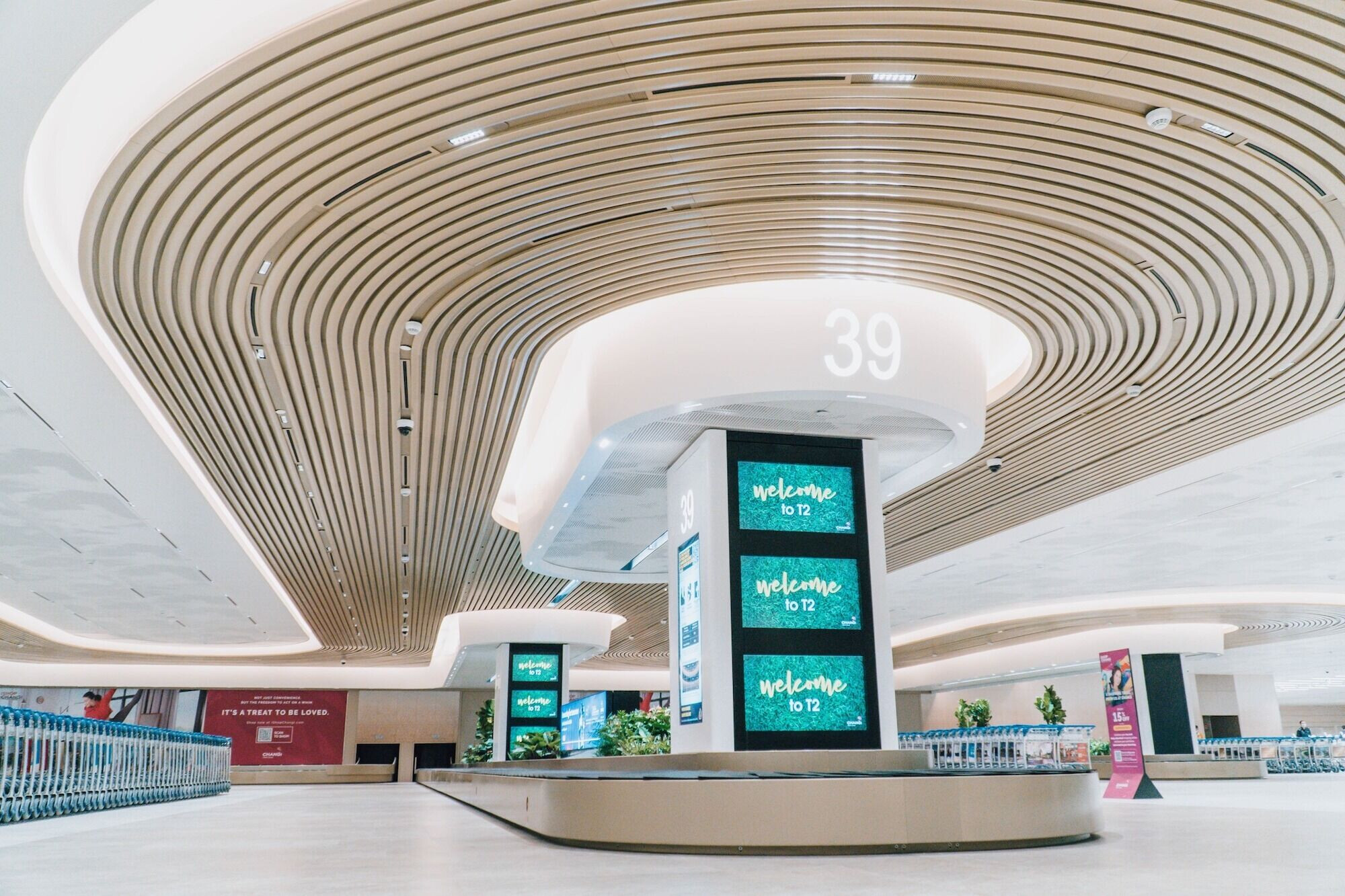The intention when we started the design for the renovation and expansion of Changi Airport’s terminal 2 was to create a multi-sensory experience evoking peace, calm and pleasure.


We wanted this architecture to be a source of emotions, a solicitation of the senses for the well-being, through the connection with nature.

As lovers of wild nature and gardens, we were inspired by all the forms we find there: those of vegetation, topography, geology, minerals and their textures, ponds, streams, currents, water reflections. All those drives us to create spaces and shapes which blurs the boundaries between architecture and landscape.

So we imagined this terminal as a journey across an indoor landscape. The journey through the terminal brings passengers between natural elements of minerals, water, and lush greenery in various forms and densities.

Spaces are like carved into the rock with the walls as layers of earth and sand. These different colored and textured lines are representative of the sedimentary layers of the earth where the lush greenery grows.

Flying, spending a long time in the sky, in a purely technological and constrained space, then land and reconnect with the ground, through the calming effect of nature, where wide spaces and fluent continuous curves envelopes passengers in a cocoon of tranquility and prepares them to embark on their shopping and spending journey while transiting in Terminal 2.

To humanize the airport experience is also to reconnect with people. Here, all spaces are treated with similar design philosophies as would be a luxurious hotel lobby. A welcoming, boutique and personal check-in feeling is created instead of a stressful experience, often marred by long queues and cold and sterile colors, with the use of rich earth tones, exquisite materials and high-technological features.

Embarking a plane is often a succession of different and unknown stages. To us it was crucial to ease the process and make it smoother. In our project, we wanted to facilitate the transitions, and use continuous and organic lines to offer clear views from one space to another, from one step to the next. There is a common architectural language to all spaces. As people have to adapt less to different environments, the comfort level naturally increases. The palette of material linked to nature is reduced and reassures the travelers.

































